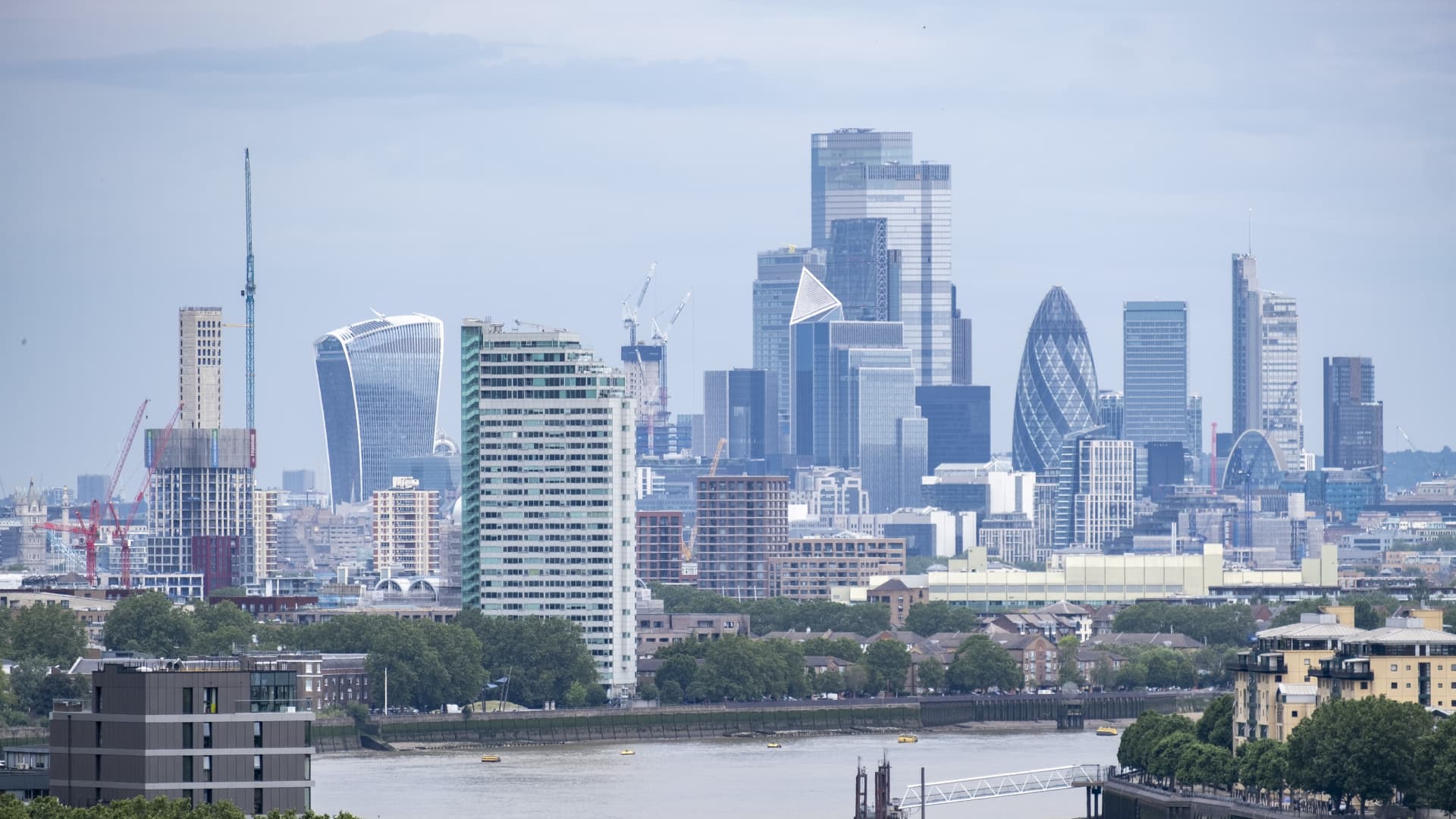Skyline view of the City of London financial district.
Mike Kemp | In Pictures | Getty Images
LONDON — The U.K. economy slipped into a technical recession in the final quarter of last year, initial figures showed Thursday.
The Office for National Statistics said U.K. gross domestic product shrank by 0.3% in the final three months of the year, notching the second consecutive quarterly decline.
Though there is no official definition of a recession, two straight quarters of negative growth is widely considered a technical recession.
Economists polled by Reuters had produced a consensus forecast of -0.1% for the October to December period.
All three main sectors of the economy contracted in the fourth quarter, with the ONS noting declines of 0.2% in services, 1% in production and 1.3% in construction output.
Across the whole of 2023, the British GDP is estimated to have increased by just 0.1%, compared to 2022. For the month of December, output shrank by 0.1%.
U.K. Finance Minister Jeremy Hunt said that high inflation remains “the single biggest barrier to growth,” since it is forcing the Bank of England to keep interest rates firm and stymie economic growth.
“But there are signs the British economy is turning a corner; forecasters agree that growth will strengthen over the next few years, wages are rising faster than prices, mortgage rates are down and unemployment remains low,” he added.
Inflation has come down markedly in the U.K., but remains well above that of the country’s economic peers and the Bank of England’s 2% target, squeezing household finances. The headline consumer price index reading came in at 4% year-on-year in January.
‘Shallow and short-lived’ recession
Marcus Brookes, chief investment officer at Quilter Investors, said that the figures most likely indicate that the recession will be a “potentially shallow and short-lived one that may not reflect the true state of the economy,” which is set to experience a “muted recovery” throughout 2024.
“U.K. GDP…
Read the full article here

Leave a Reply